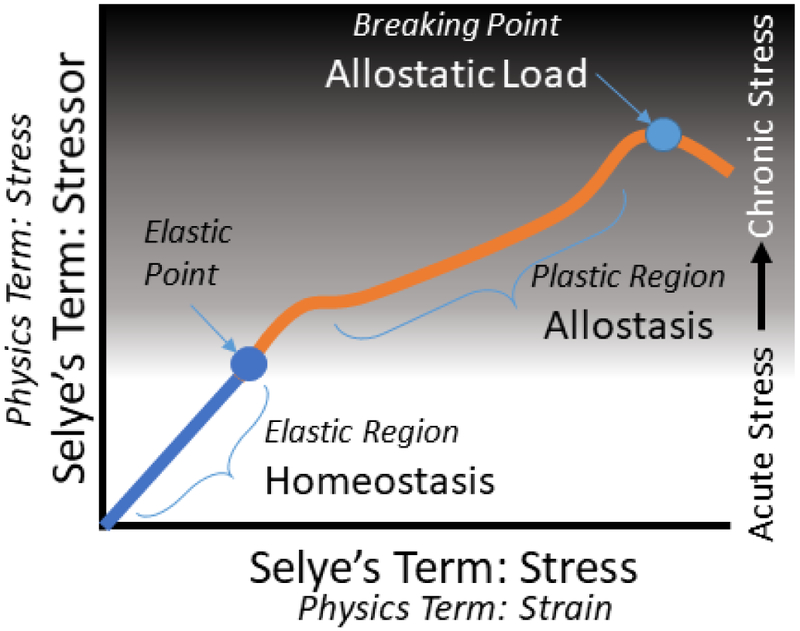Figure 1.

Selye’s ground-breaking concept of ‘stress’ was based on physics concepts. Selye initially confused the terms such that he labeled ‘strain’ as ‘stress’ and thereby had to rename the physics concept of ‘stress’ to ‘stressor’. The concepts of stressor, the external force applied to the organism, and stress, the internal response of the organism, exist in a dynamic relationship. Initially, there is a reversible and predictable relationship between the stressor applied and the stress on the system. This ‘elastic region’ is most akin to homeostasis and the changes that occur during an acute stress response. After repeated or extreme stressors, the relationship between stressors and the stress response passes the ‘elastic point’ and enters the plastic region where the relationship is less predictable, but the organism can compensate for the stressor(s) with systemic and cellular reorganization. This would be akin to allostasis. Finally, with repeated and cumulative stressor burden, the organism reaches the ‘breaking point’ and crosses the line to allostatic load such that significant negative adjustments begin to occur within the organism due to an inability to efficiently resolve the energetic demands placed by the cumulative stressor burden.
